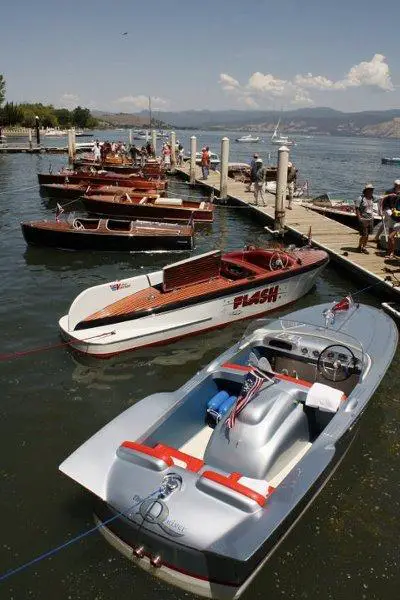
Anderson Marsh is among 220 state parks the governor is proposing to close to address the state budget. Courtesy photo.
LAKE COUNTY – A year after local residents fought a proposal to close Lake County's two parks, one local state park once again is facing closure as part of a massive plan that would gut the state parks system.
Last year, Anderson Marsh and Clear Lake State Park were among 48 parks Gov. Arnold Schwarzenegger proposed to close to address the state budget.
Now, he's upped the ante. In a startling proposal contained in his May budget revise, Schwarzenegger proposes to close 220 of the state's 279 parks, including Anderson Marsh State Historic Park.
Gae Henry, secretary of the Anderson Marsh Interpretive Association Board of Directors, called the proposal “a real kick in the stomach” after efforts to keep the park open and accessible through volunteer efforts. Anderson Marsh is visited by 43,499 people each year, generating $2,060 in revenue, according to the California State Parks Foundation.
Schwarzenegger proposes to eliminate general fund support for the state parks system in an effort to save $143 million.
The ramifications could be huge. Every park in the Lake Tahoe area would be shuttered, as would every park that's home to the state's famed redwoods, said Traci Verardo-Torres, legislative advocate for the California State Parks Foundation.
Most North Coast parks would be closed – including virtually every park north of Mendocino, Verardo-Torres said.
The popular MacKerricher State Park and Jug Handle in Fort Bragg, the Mendocino Headlands, Mount Tamalpais and Tomales Bay in the Marin District, and Robert Louis Stevenson State Park in Napa County are on the closure list.
“We are treating this as a very serious proposal and a significant threat to our state park system,” said Verardo-Torres.
North Coast Sen. Patricia Wiggins said Friday that, given voters' rejection of the five propositions on May 19, the state “will almost certainly be forced to make deeper cuts than if those measures had passed.”
What's less certain, said Wiggins, is whether the state will have to make cuts on the order that the governor has proposed, with some people feeling that the governor's proposals amount to a “a doomsday budget designed to force Democrats and Republicans to come to an agreement.”
“We need to keep all options on the table, and we need to be honest in telling people that cuts, including cuts to parks, aren't off the table by any means,” said Wiggins. “But do we need to cut from our parks to the extent to which the governor has proposed? I would hope that, in working toward a budget agreement, we find suitable alternatives that allow us to minimize closures and protect our state parks to the fullest extent possible.”
Verardo-Torres said no part of the state was spared in the proposed park closures, although Orange County's many beaches – which generate significant amounts of revenue – are being spared.
The proposal, she added, “will touch virtually every Californian.”
Criteria for closures and potential fallout
Roy Stearns, spokesman for the California State Parks Department, said the agency gathered all of its superintendents in one room and asked them which parks have resources outside of general fund money. They also identified those parks which can be self-sufficient in revenue if fees are raised and costs are lowered.
The recently released lists of parks to remain open and those to be closed were arrived at based on those discussions, Stearns said.
Clear Lake State Park, he said, is one of 10 parks across the state funded largely by boating gas taxes and reimbursements, he said.
According to a report issued last year by the California State Parks Foundation, Clear Lake State Park has 100,166 visitors annually, with revenue of $332,782.
Other parks proposed to stay open are either funded through self-generated revenue, off-highway motor vehicle gas taxes and fees, locally operated units of the state park system and parks with other concessions likely to continue operations – such as the series of private shops and restaurants that sustain operation on the Malibu Pier, according to Stearns.
If all of the $145 million in general fund support for the state parks was eliminated over the two-year period as proposed, Stearns said it would result in the need to close the 220 parks and lay off between 1,500 and 2,000 state park employees.
In addition, park water treatment and sewage plants would be closed, bathrooms locked up, electricity turned off and gates put down, said Stearns, with the properties put into caretaker status in order to preserve them.
Verardo-Torres raised the issue of closed parklands becoming susceptible to criminal activity; illegal marijuana cultivation already is a problem on public lands, she said.
Stearns said there currently are no talks about selling off parklands. “We are not about to want to go down that road unless forced to go down it,” said Stearns, calling it a very small, short-term fix that wouldn't really cure the state's budget problems.
Keeping parks open, said Stearns, would support the state more than closing them.
Verardo-Torres said the governor hasn't studied the economic fallout, which is what the foundation is now in the process of doing. They don't yet have an economic impact number, but she said every dollar spent at a state park is known to have $2.35 worth of impact in the local economy.
While Schwarzenegger said the proposal will save $143 million, the damage to the state's tourism and economy hasn't been calculated. “That's one of the things that the State Parks Foundation thinks is a real flaw for this proposal,” Verardo-Torres said.
She said that the economic downturn has hurt local governments as much as the state government, and it seems unlikely that many local jurisdictions will attempt to take over running state parklands. “Clearly there are no easy solutions out there.”
It also will be a blow to culture and education. Henry said the Anderson Marsh Interpretive Association just completed a series of field trips – which it also funded – with activities for local third graders.
She said she's not sure what the group will do next, but since they have largely been running the park through volunteer labor, she said they'll likely question if they could keep the park open that way. The proposal also would jeopardize their fall bluegrass festival event.
Verardo-Torres said state parks are a place of happy memories for many people, as well as places that preserve history and nature. “That's why we all need to fight it,” she said of the proposal.
Time is short to take action
Parks supporters have a short amount of time in which to organize in order to have the state Legislature hear their concerns.
Verardo-Torres said a state legislative budget conference committee meeting on Tuesday, June 2, will be the only opportunity for public comment to the Legislature on the parks proposal, which she said requires legislative action.
She said the parks foundation is trying to organize groups to get to Sacramento or, in lieu of that, to contact their state legislators.
Wiggins can be contacted at her State Capitol office, State Capitol, Room 4081, Sacramento, CA 95814, telephone 916-651-4002, fax 916-323-6958; or at her Ukiah district office, 200 South School St., P.O. Box 785, Ukiah, CA 95482, telephone 707-468-8914, fax 707-468-8931.
Assemblyman Wes Chesbro can be reached at his State Capitol office, P.O. Box 942849, Sacramento, CA 94249-0001, telephone 916-319-2001, fax 916-319-2101; or at his Lake and Mendocino district office, 311 N. State St., Ukiah, CA 95482, telephone 707-463-5770, fax 707-463-5773.
The foundation also has its Save Our State Parks (SOS) Campaign back online at www.savestateparks.org; there, park supporters can find out how to take action.
More information also is available at the California State Parks Foundation's Web site, www.calparks.org .
E-mail Elizabeth Larson at This email address is being protected from spambots. You need JavaScript enabled to view it. .














